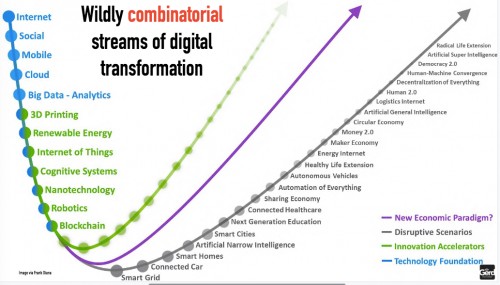The FBI has been demanding web browsing, cell location and other data from technology providers, without a warrant, for over a decade, it was demonstrated this week with a court ruling that ungagged a National Security Letter delivered to an internet service provider.  Techmeme coverage roundup here.
You know why this bothers me? Â For lots of reasons, but here’s one: it puts this gorgeous platform of the web at risk. This is going to be a big struggle for the next few years: the tension between our desire to better know ourselves and build on top of the data created by our online activity on one hand and the government’s desire to keep us safe on the other hand.
Overzealous surveillance puts at risk the public support that’s essential for innovation platforms that present opportunities to move the human experience forward in really important ways. Â This global communication network is really important, let’s not screw up its future.
One example: If you’re a user of the Foursquare mobile location platform, you’ve probably noticed how they’ve begun tracking your location persistently and sending you a push notification making it really easy to check in when you stop moving at a particular public place.  It’s something I’ve hoped they’d do for years.  Why?  Because 3 years ago today I was visiting a friend in a beautiful place, I took pictures, I checked in to the coffee shop and restaurants we went to, and now I can see all of that and more rolled-up together in my daily time capsule from Timehop.  That’s the story of my life. That data provides a structure that I wrap a narrative understanding of my life around.  I want that data capture to be easier so I capture more of it.  But I want the data for myself!
Understanding my life means two things: optimization and meaning. (That’s just begging for two more blog posts.) Think of the inverse: less meaning and less opportunity for optimization. Â I do not want that – I want software developers to be able to build technology on top of my data that help me better understand and improve my life.
Software developers can only do that if there are a bunch of people excited about using data platforms. Â For example, Foursquare and Timehop wouldn’t exist (free for users!) if there weren’t millions of people excited about using them.
It’s one thing for commercial interests to use that data for improved ad targeting – everybody’s got to pay the bills. Â I think society has already accepted that. Â Europeans have cookie warnings. Fine, we’re good.
But if law enforcement keeps slurping up all our data and looking over our shoulders, without due process like warrants and in cases where we’re supposed to still be presumed innocent, that just seems like a recipe for public backlash, withdrawal from the web and collapse of the beautiful opportunity that is data. Â Call it data, call it quantified self, I think of it in terms of optimization and meaning. Â Better understanding ourselves, each other, and the world equals a big step in human evolution. Â That’s what I want. When society’s need for safety and control puts that at risk, I think it’s a big deal. Â Not just because of what it means for the present – but what it means for the future.

